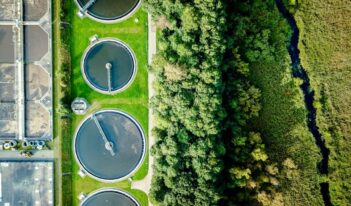
Proposed e-reporting rule aims to improve water quality, save money.
The agency tasked with protecting America’s environment is looking to information technology to improve data collection, minimize costs, and—appropriately—save paper.
The Environmental Protection Agency (EPA) recently announced a proposed rule intended to modernize data reporting required under the Clean Water Act’s National Pollutant Discharge Elimination System (NPDES). If implemented, the rule stands to impact hundreds of thousands of regulated firms, municipalities, and polluting facilities by scrapping the current paper-based reporting system and replacing it with an electronic system.
Under NPDES, it is illegal to discharge pollutants into U.S. waters without a permit. A polluting facility may obtain a NPDES permit directly from the EPA, or from an EPA-authorized state, territory, or tribe. Because the EPA and authorized states use paper reporting for NPDES permit applications and related record keeping, the proposal to convert all of these records to an electronic system would impact a large group of government officials as well as hold implications for improving governmental transparency.
Constrained by the labor-intensive practice of processing paper reports, EPA has historically focused its enforcement and data gathering efforts on large facilities with significant environmental impact, to the exclusion of other sources affecting water quality. The EPA’s proposed rule seeks to streamline data-gathering to the point that the agency can expand its water quality efforts to smaller facilities like storm water discharges, concentrated animal feeding operations, mines, and sewage overflows, all of which contribute to water pollution but may not be closely supervised under the paper reporting system.
In addition to collecting more accurate data in greater volume, the EPA also plans to make this data available to the public. The proposed rule “will substantially expand transparency by making it easier for everyone to quickly access critical data on pollution that may be affecting communities,” said Cynthia Giles, assistant administrator for EPA’s Office of Enforcement and Compliance Assurance.
EPA expects the proposed rule to accrue significant saving for federal, state, tribal and territorial entities, while at the same time improving data gathering and government transparency. The agency estimates that by the fifth year after implementation, state NPDES programs can expect to save nearly $30 million annually, while EPA itself and other regulated constituencies will collectively save another $1.9 million per year.
Much of the proposed rule is based on EPA’s study of analogous program implemented and managed by the Ohio Environmental Protection Agency. There, state officials required that polluting facilities submit discharge monitoring reports (DMRs) through an electronic reporting system, achieving 99 percent participation by 2011. Ohio’s eDMR system includes automatic compliance tools that notify permit holders about data reporting errors as well as about discharges that exceed permit limits. Ohio reports a 90 percent reduction in errors, allowing for more focused enforcement and better data quality. Before using eDMR, Ohio allocated five full-time staff members to administer discharge reporting. Now, however, no full-time staff is required to manage eDMR.
EPA also considered the Internal Revenue Service’s (IRS) implementation of an e-filing system for federal tax returns. The IRS approves privately developed tax preparation software that allows filers to complete and sign a tax return and submit it to the IRS electronically. In 2011, 79 percent of all individual tax returns were filed electronically. IRS found that tax preparers saved substantial time filing electronically versus filing with a paper return.
Environmental management software already exists and is quickly becoming ubiquitous among NPDES-permitted facilities. Some environmental management software already stores NPDES compliance information and, in some cases, can transmit that data to state environmental agencies. As a result, EPA is considering an “open platform e-file” option to allow third party software developers to provide e-reporting services to NPDES-permitted facilities.
EPA plans to implement the proposed rule in two phases. Phase One, set to occur one year from the effective date of the final rule, signals the launch of EPA’s e-filing system. Authorized states, tribes, territories, and facilities with federal permits will electronically transmit basic facility and permit information directly to EPA. EPA will also receive information on inspections, violations, and enforcement actions.
Finally, Phase One includes digitizing federal DMRs, the largest volume of data collected by the NPDES program.
Phase Two, beginning two years from the effective date of the final rule, involves expanding electronic reporting to include a wide array of new data related to water quality.
EPA announced the proposed rule in July and recently extended the comment period through December 12th. EPA also pledged to release a supplemental public notice outlining any comments received on the proposed rule that require significant change. This supplemental notice will be published within 180 days of the close of the comment period.



